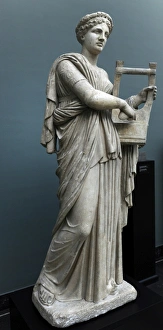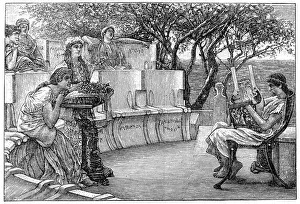Kithara Collection
The kithara, a stringed musical instrument of ancient Greece, holds a significant place in the history of music
All Professionally Made to Order for Quick Shipping
The kithara, a stringed musical instrument of ancient Greece, holds a significant place in the history of music. Depicted in various forms of art throughout the ages, it has become an emblem of lyrical poetry and melodic harmony. In the realm of mythology, Erato, the Muse of lyric poetry, is often portrayed playing the zither-like kithara. This divine connection highlights its importance as a tool for artistic expression and inspiration. Archaeological discoveries have provided us with glimpses into how this enchanting instrument was played. A fresco from c. 50-40 B. C showcases a seated woman gracefully strumming her kithara, her fingers dancing along its strings to create captivating melodies. Terracotta artifacts from different eras also showcase the kithara's significance. A neck-amphora with lid and knob from c. 540 B. C depicts musicians engaged in harmonious play using this versatile instrument alongside others like lyres and tibias. Sappho, one of ancient Greece's most celebrated poets known for her passionate verses set to music, is immortalized through etchings that depict her holding a kithara while pouring out her soulful lyrics. Ancient Greek society reveled in musical gatherings where multiple instruments were played together in perfect harmony. Paintings portraying these concerts bring to life scenes filled with joyous sounds emanating from not only the kitharas but also other beloved instruments like lyres and zithers. The dolphin motif frequently appears alongside depictions involving the kithara - symbolizing Arion's miraculous rescue by dolphins after he charmed them with his melodious tunes. These stories further emphasize the power that music created by this magical instrument held over both humans and creatures alike. As time passed, even during late Archaic periods around 490 B. C. , terracotta amphoras continued to bear intricate designs featuring musicians playing their cherished kitharas, showcasing the instrument's enduring popularity.




















